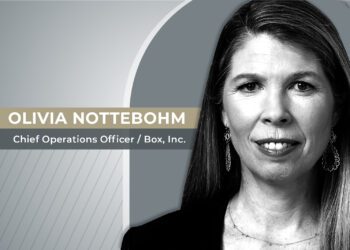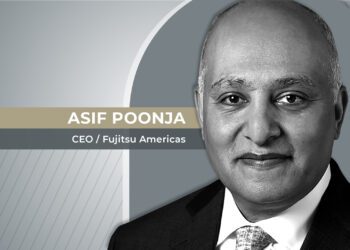CEO Bracken Darrell has driven the expansion of Logitech into a new businesses since 2012.
A lot has happened in Switzerland-based multi-brand consumer tech company Logitech in the five years since Bracken Darrell took the wheel in 2012. At the end of fiscal year 2017, the company that specializes in PC/tablet accessories as well as mobile speakers, video collaboration, gaming, and smart home devices, saw sales grow 15% in constant currency year on year and is on the look for another 10 to 12% of sales growth in 2018.
A clear focus on a better consumer experience and a flat organizational structure are part of what helped Switzerland and Silicon Valley-based company Logitech back from the financial doldrums where it saw itself during the first part of the decade, the company’s CEO says.
With main offices in Lausanne, Switzerland, Logitech is known around the world for its high precision keyboards, mice and mobile speakers that help connect people “to the digital experiences they care about,” as it says on its website. It has sleek gaming keyboards, mice and headsets, mobile speakers, security cameras and earbuds for runners. It even recently reintroduced the trackball as part of its precision MX Ergo device.
“We strive to bring quality and value to our products and to give the user a better experience. I would say we are not trying to out-scale other companies, we are actually trying to do the opposite, to dig deep,” adds Bracken Darrell, the firm’s CEO since January 2013.
When Darrell took over the company, shares in the NASDAQ traded at around US$7. Today, after years of refocusing and expanding into new businesses, its shares are circling the US$35 mark, a five-fold jump that’s a testament to its new, sharper view of the business. And FY 2017 sales rose 15% to US$2.22 billion after a 9% climb from the previous year.
Something that Darrell takes pride on is keeping a very flat organization. “My team is about two dozen people. Every Wednesday morning at 7 we talk about the plan, we talk about all that’s wrong… we pull themes apart,” he says. Being a global company, it is a large user of video-conferencing systems (one of Logitech’s categories). “You can do a video-call anywhere in the world. That is a key factor in how we operate. I think it’s the best practice. I believe every company in the world is going there and that’s the reason we play in the video-space,” he adds.
Logitech: A design company
Despite the many changes introduced to the company, one thing that Bracken is proud of is the introduction of design thinking to the product portfolio.
Logitech, he remembers, started out in the last century as a manufacturer of peripherals keyboards and mice, among others— for some of the largest names in the computer business, basically letting others brand their products as their own. That was at some point their main bread and butter, but it was finally let go in 2017 as a low-margin venture.
“My mandate was to turn the business around, but I didn’t want to focus on a short-term turnaround, I really wanted to create a ‘design’ company over the long term,” he adds. As someone who ran the Braun consumer electronics company before (famed for its design), he says his goal was to “recreate” Logitech into a design-centered company.
But change has happened, and quite a lot of it, he adds. In 2013 Logitech brought onboard the former chief of Nokia design, Alastair Curtis, to lead the charge for better design in the company.
The products look great, but design thinking is more than that: it’s about the whole consumer experience.
“We like to think we are doing something beyond our four walls to make the world a better place. I do believe strongly in design innovation. There are many that will not agree on the same idea I have, but we show that through our numbers,” Darrell says.
Adapting to changing times
One of the things Logitech had to adapt to as it turned around, was the deep changes happening in the peripherals business in the age of the smartphone and the mobile everything. Despite keyboards, mice and PC webcams still making roughly half of their net sales, emerging categories like video collaboration, mobile audio and gaming have grown into much larger categories in recent years.
Just the mobile speakers’ category saw a jump of 31% in sales in FY 2017, to US$301 million, according to Logitech’s financial report, while the category including wearables saw a jump of 26% during the same year. And that is not taking into consideration the video collaboration segment, which despite being still small as compared to other business areas at US$127 million in 2017, has grown by over 40% year over year at least since 2015.
The gaming segment also saw a healthy 28% growth in 2017, to US$314 million.
A changing environment opens any company to misses and Logitech is no exception, but Darrell believes it is now in a good place to manage eventual failures as it opens new categories looking for the perfect fit for its products.
“We can move the portfolio into new categories, and in some of those we had really good performance, but the really exciting thing is that we have reached a place where this company is able to send itself further in the right direction; we’re just getting started.”
How to not rest on past achievements
One thing that worries Darrell is how to keep a company in the middle of a winning streak from becoming complacent and conservative. The challenge for that, beyond keeping a solid relation with the company’s extensive network of suppliers, is an internal one, he says.
“When you get a momentum as big as we have, you risk becoming too conservative, you tend to not take a lot of risks and keep trying things the same way in the same line of work… your people get comfortable in existing global performances or you miss out on important plays,” Darrell adds.
One remedy for that is to keep reviewing everything and innovating aggressively in terms of design and functionality. The goal, the executive explains, is to keep expanding into more and more niche areas —what he calls the “small ponds”— and becoming leaders there instead of taking it up in too-crowded areas.
“Hopefully we’ll be successful most of the time, or at least part of the time. That is what we need to do, that is our baseline,” he says.












